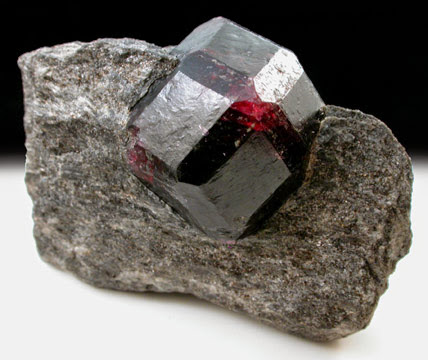⛰️Geology rocks!🤘🏾
Garnet is mineral formed by low to high-grade metamorphic events given the garnet type.
This process is lead by the rock's temperature, pressure, and chemical composition.
Almandine is the most common garnet, formed by metamorphic processes (regional metamorphism in clayey and pelitic sedimentary rocks, contact metamorphism), hydrothermal, and more rarely magmatic, typically found in gneisses and schists, in hornfels, pegmatites, etc. It also occurs in eclogites, granites, and sedimentary rocks as a detrital mineral.

Pyrope usually occurs in basic to ultrabasic igneous rocks of deep origin (eg, peridotites, kimberlites, eclogites) and metamorphic rocks subjected to high temperatures and pressures (eg anorthosites, granulites, retroeclogites, etc.). It can also occur in amphibolites, shales and as a detrital mineral in sediments.

Grossular occurs in limestones and marls subjected to moderate to high-temperature hydrothermalism and contact or regional metamorphism. It is found in rocks submitted to calcic metasomatism, being found in some schists and serpentinites.

Andradite is formed by contact and regional metamorphism of medium to high grade over impure loams and limestones or calcic igneous rocks. It also occurs in chlorite shale, serpentinite and titaniferous alkaline igneous rocks.

Uvarovite occurs associated with chromiferous deposits, generally submitted to metamorphism (hydrothermal alteration in chromite-rich rocks); in limestones and skarns metamorphosed by the reaction of dolomite and chromite. This type is not so common.
